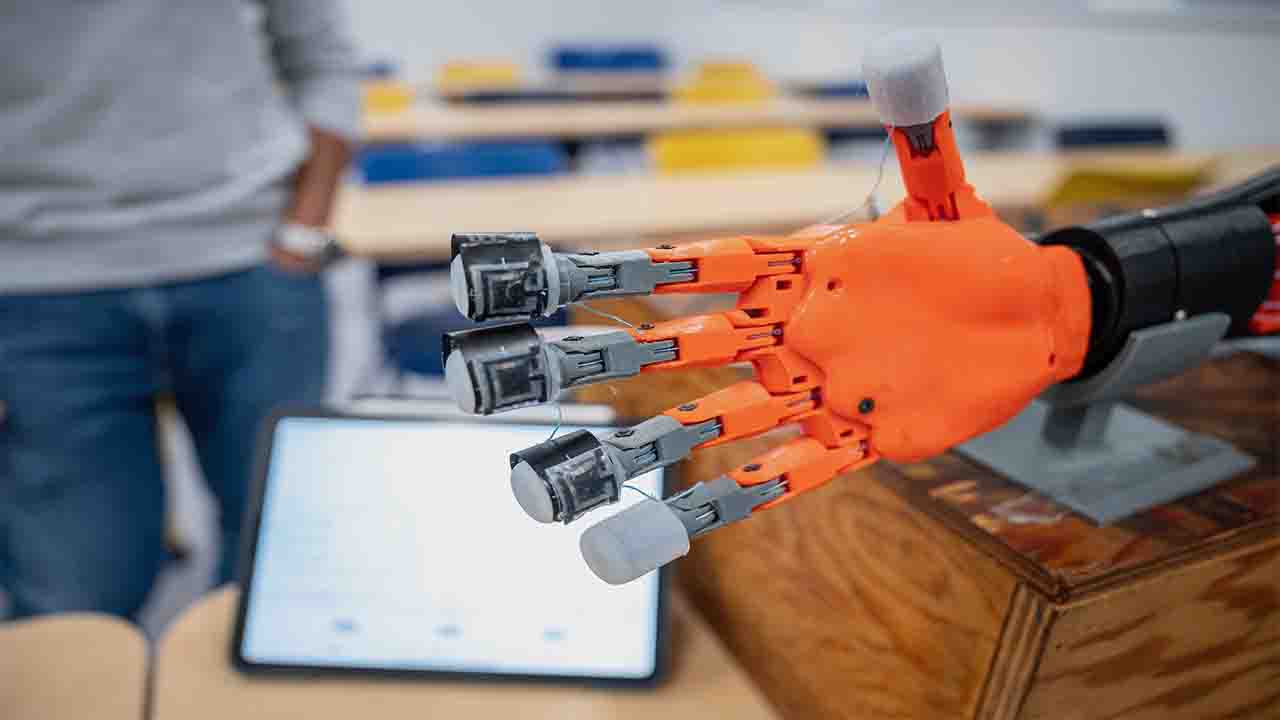Science & Technology, Canada (Commonwealth Union) – A novel soft sensor, developed collaboratively by researchers from the University of British Columbia (UBC) and Honda, exhibits remarkable qualities such as stretchability, and exceptional sensitivity. This groundbreaking innovation holds the promise of revolutionizing various applications in the realms of robotics and prosthetics.
When affixed to the surface of a prosthetic arm or a robotic limb, this sensor skin offers the invaluable attributes of touch sensitivity and dexterity. Consequently, it empowers these mechanical devices to perform tasks that have traditionally proven challenging, like delicately picking up a piece of soft fruit. Furthermore, the sensor possesses a soft, human-like texture, enhancing the safety and lifelikeness of human-machine interactions.
Dr. Mirza Saquib Sarwar, the lead author of the study and the creator of this sensor during his doctoral work in electrical and computer engineering at UBC’s Faculty of Applied Science, highlights its remarkable capabilities. He indicated that their sensor can detect a variety of forces, enabling a prosthetic or robotic arm to respond to tactile stimuli with a level of finesse and precision. For instance, these arms can securely hold delicate items such as eggs or glasses of water without causing damage or dropping them.
At the core of this innovative sensor is primarily silicone rubber, a material well-known for its use in creating special effects in movies to mimic human skin. What sets this sensor apart is its unique design, enabling it to flex, bend, and wrinkle just like natural human skin.
“Our sensor uses weak electric fields to sense objects, even at a distance, much as touchscreens do. But unlike touchscreens, this sensor is supple and can detect forces into and along its surface. This unique combination is key to adoption of the technology for robots that are in contact with people,” added Dr. John Madden, who is a senior study author as well as a professor of electrical and computer engineering who is the lead of the Advanced Materials and Process Engineering Laboratory (AMPEL) at UBC.
The development of this technology by the UBC team was a collaborative effort with Frontier Robotics, Honda’s esteemed research institute. Honda has been at the forefront of humanoid robotics innovation since the 1980s and has made significant contributions to the field, including the renowned ASIMO robot. Furthermore, they have created various devices designed to aid in walking and the promising Honda Avatar Robot.
Mr. Ishizaki Ryusuke, one of the study’s principal authors and the chief engineer at Frontier Robotics, expressed their satisfaction in partnering with Dr. Madden’s lab, which possesses substantial expertise in flexible sensors. He emphasized the importance of developing tactile sensors for the application in robots, showcasing the collaborative spirit of this endeavor.
The researchers emphasize that the newly developed sensor offers both practicality and scalability. Its straightforward fabrication process allows for ease of production on a large scale, covering extensive surface areas and manufacturing substantial quantities.
Dr. Madden highlighted the growing role of sensors and intelligence in enhancing the capabilities and lifelikeness of machines, thereby enabling people to increasingly work and interact alongside them. This advancement underscores the potential for further achievements in this field.
“Human skin has a hundred times more sensing points on a fingertip than our technology does, making it easier to light a match or sew. As sensors continue to evolve to be more skin-like, and can also detect temperature and even damage, there is a need for robots to be smarter about which sensors to pay attention to and how to respond. Developments in sensors and artificial intelligence will need to go hand in hand.”
The further advancement of multiple technologies in recent years from researchers across the world, has seen further life like robots emerge.








